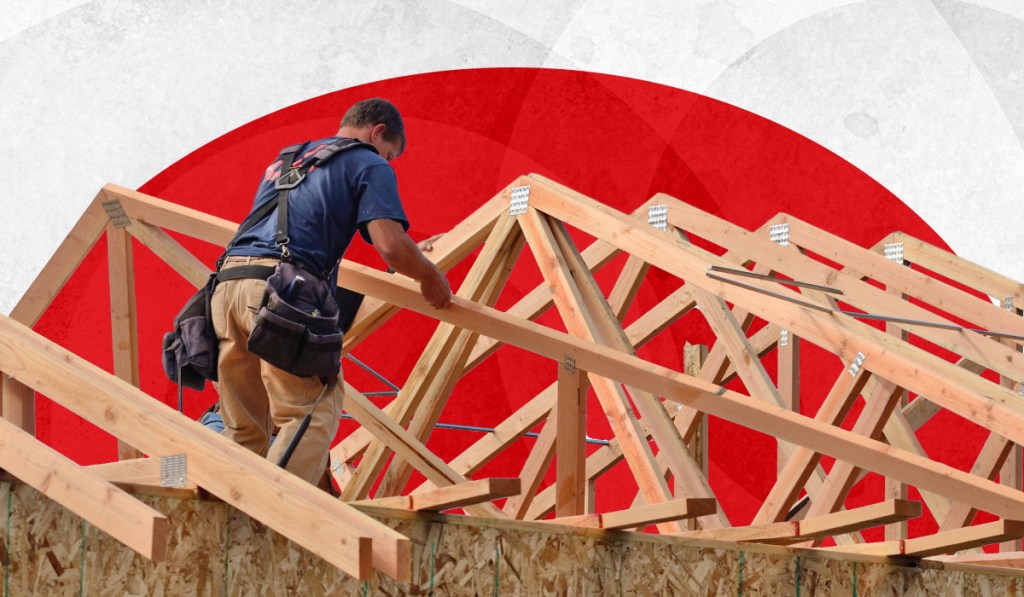After falling 0.8% in March, housing starts were back up again in April, according to a report released Wednesday by the U.S. Census Bureau and the U.S. Department of Housing and Urban Development (HUD).
Home starts checked in at an estimated annual pace of 1.401 million in April, up 2.2% month over month. Despite this increase, housing starts were down 22.3% on a yearly basis.
The monthly uptick in starts came via increases in both single family (1.6%) and multi-family (5.2%) building, with paces of 846,000 homes and 542,000 homes, respectively.
“Single-family housing starts have improved modestly alongside cautious builder optimism, as homebuilder sentiment inched into positive territory in May, increasing for the fifth consecutive month.” Odeta Kushi, the deputy chief economist at First American, said in a statement.
Industry economists attribute the uptick in housing starts and builder confidence to the low level of existing home inventory.
“Despite elevated mortgage rates and a slower-than-typical spring housing market, homebuilders are feeling confident about the outlook for new housing demand because the inventory of existing homes for sale remains very constrained,” Lisa Sturtevant, the chief economist of Bright MLS, said in a statement.
“In April, the inventory of existing homes for sale totaled just 980,000, far lower than the long-term average of about 2.3 million homes.”
While housing starts were up in April, the number of permits issued was down 1.5% month over month to a pace of 1.416 million, thanks to a 9.7% monthly decrease in the number of multi-family permits issued to 502,000. However, there was good news for single-family home builders as the pace at which permits were issued rose 3.1% from March to 855,000.
Year over year, the number of permits issued was down 21.1%.
Compared to the building boom in 2021 and 2022, “new construction has slowed considerably,” said Nicole Bachaud, Zillow’s senior economist. “However, the permits pulled, and units started a year ago are making their way to the market now with completions up over last year, adding some new inventory to the market.”
Housing completions were also down in April, dropping 10.4% from the month prior to a pace of 1.375 million. However, on a yearly basis, completions were up 1.0%. While single-family completions were down 6.5% month over month to a pace of 971,000, multi-family completions were up 5.2% to 400,000.
With existing home inventory so low, builders are working to get more new homes on the market.
“Existing-home inventory remains limited as the majority of homeowners are rate-locked into their homes. As a result, prospective buyers may turn to the new-home market. If finding an existing-home is difficult, a new home at the right price is a good substitute,” Kushi said. “While new homes have historically made up approximately 1% of total inventory, that share has increased to nearly 30% in recent months. Estimates of the nation-wide housing shortage vary, but tend to range from between 3.5 million to 5.5 million housing units. This implies that even if all units under construction came to market tomorrow, we’d still be underbuilt by millions of units. As such, new supply of housing is more likely to ease than erase the national housing shortage, although this will vary by location.”
As builders work to fill this void, they are still faced with multiple challenges.
“Builders continue to face obstacles, including high material costs and a lack of labor,” Sturtevant said. “One of the biggest challenges are local regulations that often limit the amounts of types of housing that can be built. Unless localities allow more residential development, housing demand will outstrip supply and housing affordability will continue to be a challenge.”
Regionally, housing starts were up month over month in the Midwest (32.6%) and the West (34.6%) but were down 23.4% in the Northeast and 6.3% in the South.
On a yearly basis, homebuilders’ housing starts were down in all four regions, with the West posting the largest decrease at 25.5%.





